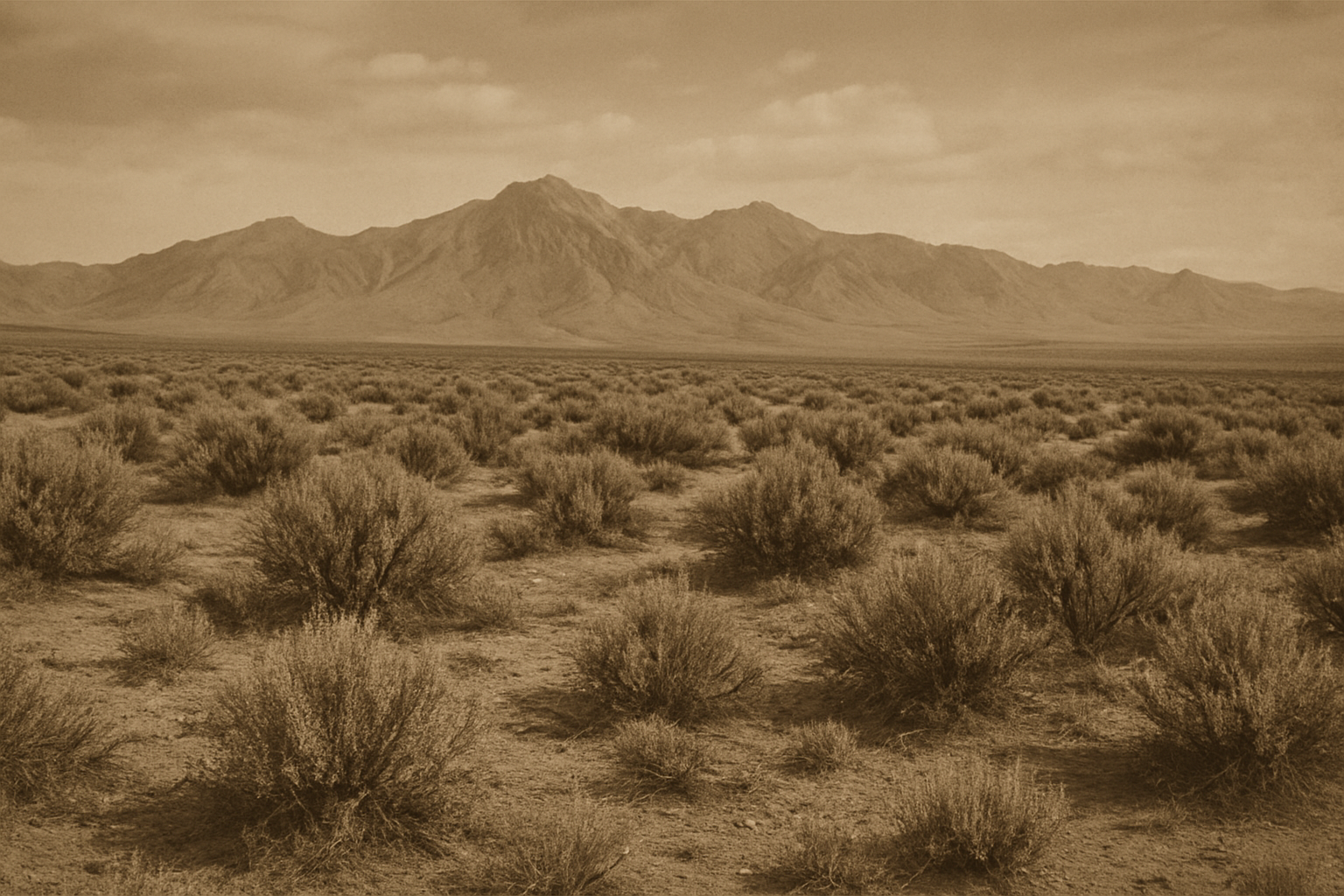The year 1908 clung to the high desert of Nevada like a shroud of summer dust. Before this area was the Sun Valley, NV we know and love today—a sprawling valley floor cradled between the mountains—there was only the Silver Peak Plateau. It was a harsh, magnificent landscape: a vast, unforgiving tableland of sagebrush and stunted juniper, rimmed by jagged peaks that seemed to scrape the very ceiling of the world. For decades, it had only ever been home to prospectors chasing whispers of silver and the hardiest of mountain sheep.
Jedediah Stone, a man whose frame was as tough and gnarled as the mesquite roots he often pried from the earth, was one such prospector. He maintained a solitary claim near the precipitous eastern edge of the plateau, sleeping under the Milky Way and measuring his days by the slow, hot crawl of the sun. He wasn’t rich, but he was content, a keeper of the high silence.

The evening of August 14th began like any other. The air was crisp, scented with pine and the metallic tang of dry rock. Jedediah was hunched over a sputtering campfire, nursing a tin cup of weak coffee and reading by the flickering light of a kerosene lantern. The silence was absolute, the kind of silence that doesn’t just lack noise but seems to absorb it.
Then, something happened…
It didn’t begin with a sound, but with a light. A streak of emerald-white fire ripped across the star-dusted sky, brighter than a hundred flares. It descended from the northern zenith, moving with an impossible speed that defied physics. Jedediah dropped his coffee, the hot liquid instantly lost to the thirsty ground. He shielded his eyes, watching the celestial projectile grow from a distant spark to a blinding, roaring behemoth.
The sound followed the light, a low, guttural thunder that vibrated through his very bones. It was the sound of the atmosphere being torn, of rock moving faster than sound. The light, now a blinding orb of blue-green flame, was headed straight for the heart of the Silver Peak Plateau—less than three miles from Jedediah’s solitary cabin.
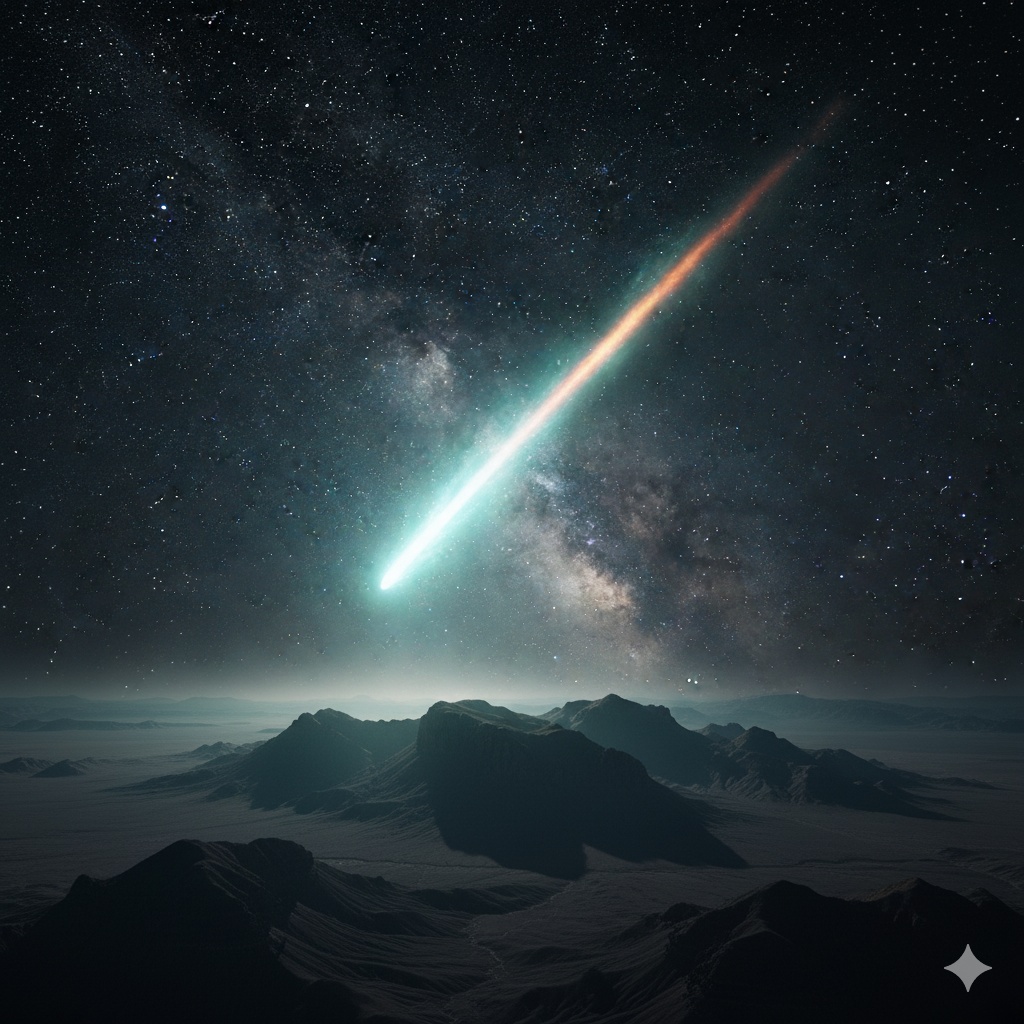
But Jedediah didn’t run. He couldn’t. He was paralyzed by the pure, terrifying spectacle. The impact was not a crash; it was an explosion of silence…
It was a vast, concussive pressure wave that hit Jedediah like a solid wall, knocking him clean off his feet and sending the lantern tumbling. The air was violently exhaled from the land. The ground beneath him bucked and roared, a seismic shudder that lasted a terrifying, endless thirty seconds. The surrounding mountains, which had stood immutable for millennia, seemed to sigh and tremble.
When the dust began to settle—a monumental plume of pulverized earth and vapor that rose thousands of feet into the night sky—Jedediah scrambled back to his feet. He couldn’t hear the ringing in his ears over the new, unnerving sound: the deep, continuous groan of stressed earth.
Where the plateau had been flat and featureless, there was now a profound, gaping bowl in the earth. The impact had instantly vaporized a significant section of the plateau, excavating a crater nearly three miles wide and plunging the floor down hundreds of feet. The edges of the new basin were sheer, jagged cliffs where the old tabletop had been cleaved away, and already, loose rock was cascading down the steep new slopes.
It took Jedediah three days to cautiously make his way to the rim of the newly-formed depression. The descent was treacherous, forcing him to use old mining ropes and instinct to navigate the freshly-fractured rock. The air was still hot near the center, and the smell was not of sulfur or fire, but of clean, ionized ozone and freshly-broken stone.
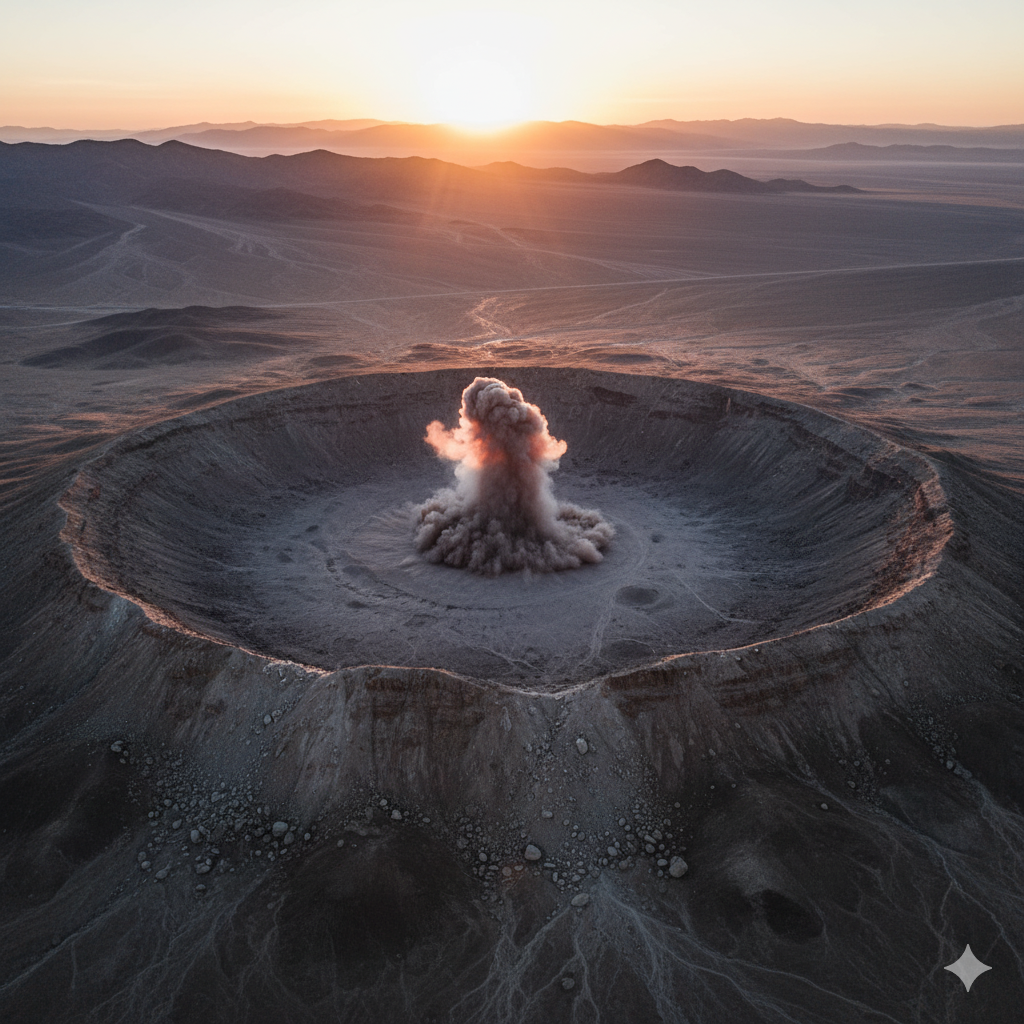
The heart of the valley was a bizarre, alien landscape. The ground was dotted with tektites—small, glassy pebbles formed when melted rock splashed out and cooled mid-air. But his eyes were drawn to the center, to the single, magnificent object that had defied complete vaporization.
It was the meteorite.
It was not large by planetary standards—perhaps twenty feet in diameter—but it was monumental in the context of the desert. It was buried deep, but its visible surface was a dull, coppery black, radiating a strange, barely perceptible internal light. It wasn’t the fiery glow of heat, but a deep, golden luminescence, as if the rock were holding a captured sun.
Jedediah, falling to his knees before it, felt a surge of awe that transcended fear. He didn’t see a rock that destroyed a plateau; he saw a rock that created a valley. He touched the surface, and it was cool, smooth, and strangely welcoming.
He named it the Sunstone.

The news, carried slowly by lone riders and the telegraph from the nearest rail station fifty miles away, took weeks to filter out to the world. When geologists and scientists finally arrived, they were stunned. The sheer power of the impact was calculated to be the equivalent of hundreds of kilotons of dynamite. They confirmed the origin: a rare, iron-nickel meteorite, probably traveling for eons before its date with destiny.
But the real transformation wasn’t the crater itself—it was the effect the impact had on the surrounding hydrology.
The Silver Peak Plateau had been notoriously arid because its deep, porous granite channeled water too far below the surface. The meteorite’s impact, however, acted as a massive, focused pressure point. It cracked and compressed the bedrock deep below the new valley floor, creating a natural, vast basin that finally intersected and trapped the wandering subterranean water table.
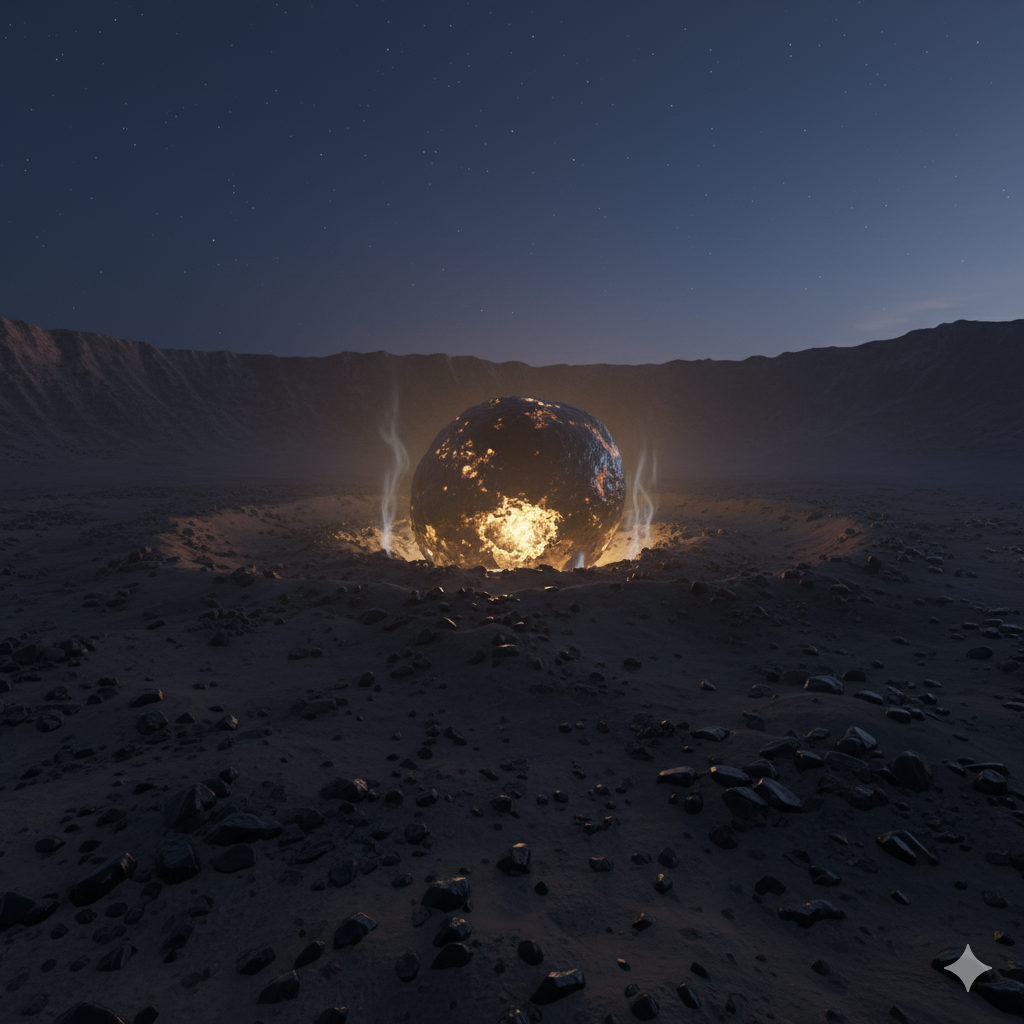
Within a year, small springs began to bubble up from the valley floor. First, trickles, then small pools, and finally, a genuine aquifer began to fill the lower-most recesses of the crater. The harsh desert floor became moist, and the fine, mineral-rich dust from the pulverized rock and the meteorite itself created an incredibly fertile soil.
Jedediah Stone, who had never left the area, was the first to realize the potential. He used his last savings to file a claim not for gold or silver, but for the land surrounding the emergent springs. He planted a small patch of vegetables—carrots, lettuce, and beans—and watched them flourish in the deep, enriched soil.
As word spread, people began to come. Not just prospectors, but farmers, ranchers, and families seeking a new start. The name Silver Peak Plateau became obsolete. The settlers, seeing the fertile valley floor basking in uninterrupted sunlight, and knowing the legend of the golden meteorite that formed it, started calling their new home “Sun Valley.”
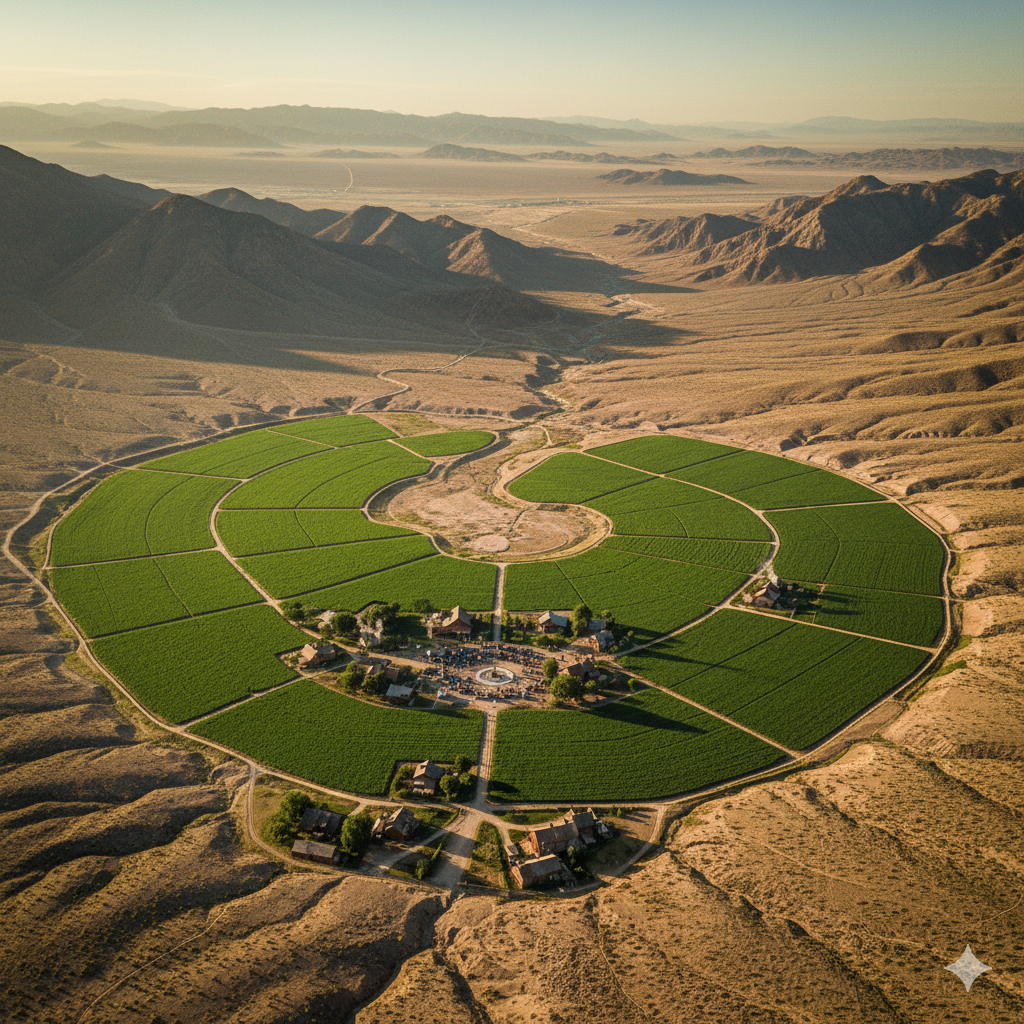
The meteor was carefully excavated by a team from the Smithsonian in 1912, leaving behind a small, deep pit that was later capped and turned into a community well—a symbolic source of the valley’s life. But the legacy of the Sunstone remained.
Jedediah Stone lived out the rest of his days in a small farmhouse overlooking the green fields he helped cultivate. He would tell the children the story, how the valley wasn’t carved by wind or water over eons, but by a single, terrifying, beautiful act of cosmic creation.
By the 1950s, the Sun Valley area was a thriving, self-sustaining community, a green jewel in the Nevada desert. Its unique crater shape, its surprisingly fertile land, and the rich mineral deposits brought to the surface were all a direct result of that one fateful night in 1908. The inhabitants carried a quiet pride, knowing that their home was the only place on Earth founded not by human effort, but by a messenger from the stars. It was a place where a cataclysmic end had become a brilliant, life-giving beginning.
Fictional concept by Richard Barnet. Text and images generated by Gemini and ChatGPT.

